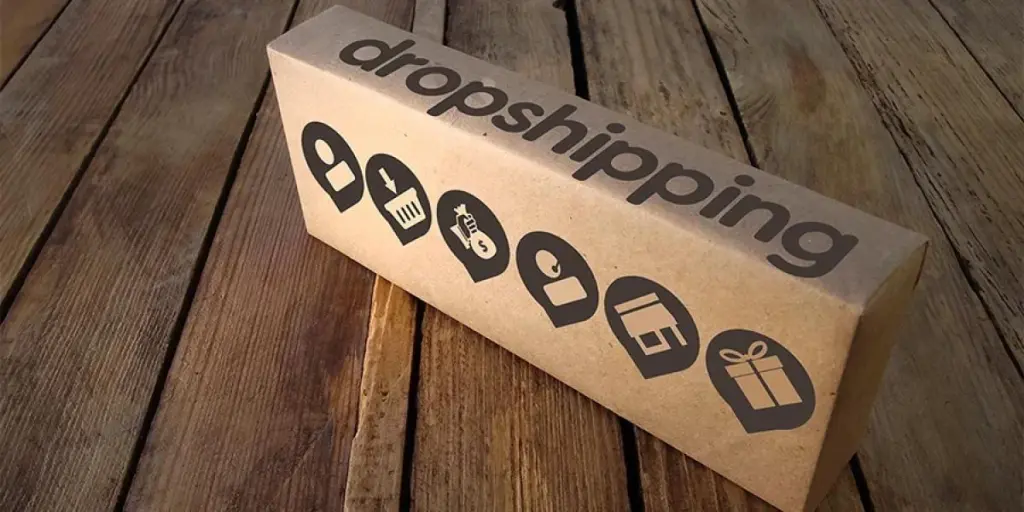The world is so digitized and connected that customers are now purchasing everything from their couch at home, from fast food and everyday items to fashion and luxury products. According to the latest data, the number of online shoppers worldwide is approximately 2.64 billion. That’s a whopping 33% of the current world’s total population.
An ecommerce business is simply an online shopping store. Instead of customers walking to a physical store to browse and purchase the products they want, ecommerce lets them do all that on their phone or computer. That’s why many entrepreneurs, especially small business owners, are considering ecommerce. There are many benefits to consider starting an ecommerce business in 2024:
- Lower upfront investments: Unlike brick-and-mortar stores, an ecommerce business doesn’t require monthly rent fees, utilities, inventory costs, and related overhead expenses.
- Global market access: With ecommerce stores, there are no time or geographical limitations. You can make sales anytime, anywhere.
- More flexibility: Ecommerce businesses are easily scalable. You can widen your product range as your sales grow. A product category is no longer selling? No worries, you can simply change the market niche to adapt to consumer preferences.
For all these reasons, it’s no wonder that there are more than 24 million ecommerce stores worldwide. So, how do you get started? Which product ideas to choose? And how can you reach potential customers? Let’s explore the answers to all these questions as we go through this step-by-step guide on starting an ecommerce business from scratch!
Table of Contents
1. Determine your ecommerce business model
2. Decide how to source products
3. Set up your online ecommerce store
4. Promote your ecommerce business
5. Manage operations and logistics
6. Budget and manage financial costs
7. Sealing your ecommerce success
1. Determine your ecommerce business model

Launching an ecommerce business first requires you to know what you will sell. The advantage of ecommerce is that business owners can choose from a limitless array of niche ideas. From beauty and personal care products to jewelry and electronic gadgets, you can literally sell anything.
However, this doesn’t mean you should aim blindly for any niche market and wish for the best. It’s important to find a profitable niche. You want to sell products that have a sufficiently large customer base but are not overly saturated with competitors. Let’s explore how to identify profitable product ideas in a scientific and systematic manner:
i. Conduct market research
When searching for a market segment, many ecommerce experts recommend that their followers begin with what they know or are interested in. But in reality, to be a successful ecommerce business owner, you shouldn’t sell what you like but what people want. Here are some guideline criteria to look for in a target market:
- Consistent demand: It’s important to choose a market with products that have consistent demand over time. It’s also a great idea for beginners to choose viral markets to benefit from the short-term surge in customer demand. Check out these 10 free ways to find trending products online.
- Large customer base: The target market should be large enough to be worth your time and efforts. After all, you need a large target audience to easily reach your customers, scale your sales, and expand your product offerings. Check out how to calculate the market size and why it is important.
- Viable profit margins: Even with a large customer demand, when the competition is too fierce, the profits per product become too thin to the point that the ecommerce business is no longer viable. It’s important to evaluate the average price of products, the cost of goods sold, and the customer lifetime value (CLV).
For more details, here is a step-by-step guide to conducting product research and finding a target market that meets all the criteria above. This guide explores various research methodologies, including surveys, data analysis, social media monitoring, and artificial intelligence (AI).
ii. Identify your target audience
Once you identify the target market, it’s important to determine your ideal customers within the selected market niche. Businesses need to identify the common characteristics and interests of customers who are willing to pay for their products. You can segment the target audience based on various factors, including:
- Demographic factors: You can divide the target audience based on demographics, such as age, income, marital status, and education level.
- Psychographic factors: It’s possible to group customer segments based on their attitudes, lifestyle, personal traits, and behavioral patterns.
- Technographic factors: If you are selling electronics and technological gadgets, it might be a good idea to segment customers based on their IT literacy, device type, and technical preferences.
Check out these 9 types of market segmentation to know your customers better. Based on the results of your target audience segments, you will need to create buyer personas. These personas should be as close as possible to your ideal customers. Businesses will need these buyer personas later on to develop effective and personalized marketing strategies.
iii. Look for potential problems to solve
A great product is not one with many fancy features but one that solves customer problems better than competitors. The buyer personas developed earlier will come in handy in this step. You need to understand the pain points of your target audience to come up with a great, profitable product idea.
This is also the time to conduct a competitor analysis to understand what other businesses offer to solve customer problems. You can analyze online product reviews or infiltrate social media groups to look for common complaints or issues about current products in the market. Your product idea must offer a unique value proposition (UVP) to entice customers to choose you over your competitors.
For instance, if your target audience is novice gardeners, you might notice that they are struggling to keep their plants alive and that current smart gardening systems in the market are either too complicated or too pricey. You can then come up with the product idea of a user-friendly gardening system that waters plants automatically based on their needs, soil humidity, and ambient temperature.
iv. Create your finalized business plan
As you can see, there is much work and research to develop a profitable ecommerce business idea. Ecommerce businesses need a formal document to record their research findings and outline how they plan to operate and grow their business. Here are the key elements that you should include in your business plan:
- Executive summary: This section should provide a concise overview of your ecommerce business, the target market, and how you intend to capture it. It should also summarize the main points of your business plan.
- Business model: Make sure to describe the operational structure of your ecommerce business, including the processes and resources. This section should also describe your product offerings, their benefits, and how they solve customer problems. Here are some examples of ecommerce business models.
- Market analysis: This section should summarize your key market research findings and trends. This is where you need to describe what your competitors are doing to attract potential customers and how you can do it better and differently.
- Marketing and sales strategy: It’s important to define the strategies that you will use to attract and retain target customers. This section should describe your pricing and marketing strategies. You should also include your UVP and explain why customers should choose your product over that of competitors.
- Financial plan: You need to know the financial requirements for running your ecommerce business. This section should describe your start-up capital, funding sources, and cash flow projections. The financial plan should provide a clear idea of whether the ecommerce business idea is viable or not.
2. Decide how to source products

Types of products you can sell
When starting your ecommerce business, deciding the type of products you want to sell is crucial. This decision largely depends on your market research and target audience. Generally, products can be categorized into niches such as fashion, electronics, health and wellness, home and garden, and hobbies and interests.
Within these categories, you can choose to sell generic products or opt for more specialized items that cater to a specific segment. Picking the right product type not only aligns with your business vision but also ensures you are catering to the needs and preferences of your target market.
Manufacturing vs. Dropshipping
Once you’ve decided on the types of products you want to sell, you’ll need to choose how to source them. There are two primary methods: manufacturing and dropshipping.
- Manufacturing involves creating your own products. This option gives you complete control over product quality and branding. However, it requires a significant investment of time and money. You’ll need to handle or outsource every aspect of the production process, from design and prototyping to sourcing materials and finding a manufacturing facility.
- Dropshipping, on the other hand, allows you to sell products without holding any inventory. When a customer places an order, the product is shipped directly from the supplier to the customer. This model reduces overhead costs and eliminates the need for inventory management. However, it also means less control over product quality and longer shipping times.
Finding reliable suppliers
Whether you’re manufacturing your own products or opting for dropshipping, finding reliable suppliers is crucial. For manufacturers, this means finding sources for raw materials or components, as well as production facilities that meet your quality standards and production timelines. For dropshippers, it involves finding reputable suppliers who can provide quality products and fulfill orders efficiently.
To find reliable suppliers, start by attending trade shows and industry events related to your product niche. You can also use online supplier directories and platforms like Chovm.com for manufacturing or AliExpress for dropshipping. Before settling on a supplier, check their references, review samples of their products, and test their customer service response times.
Managing Inventory
If you choose to manufacture your products or buy them wholesale, you’ll need to manage inventory. Effective inventory management ensures you have enough stock to meet customer demand without over-investing in products that might not sell.
Consider implementing inventory management software to track stock levels, sales patterns, and order fulfillment. This technology can help you decide when to reorder products and how much to keep in stock. Additionally, adopting just-in-time (JIT) inventory practices can minimize your storage needs by ordering stock as close as possible to when it is actually needed.
By carefully selecting the types of products to sell, deciding between manufacturing or dropshipping, finding reliable suppliers, and managing your inventory effectively, you can lay a solid foundation for a successful ecommerce business.
3. Set up your online ecommerce store

After selecting your product sources and deciding what you will sell, the next crucial step is setting up your online ecommerce store. This is your digital storefront—the place where customers will browse, choose, and purchase your products. A well-thought-out and executed online store can significantly impact the success of your ecommerce business.
Choosing an ecommerce platform
Your ecommerce platform is the foundation of your online store. It’s where you’ll manage products, sales, customer interactions, and backend operations. The market offers a variety of platforms, each with its own set of features. Popular options include Shopify, Magento, WooCommerce (for WordPress websites), and BigCommerce.
Consider factors like ease of use, customization options, scalability, and cost when choosing the right platform for your business. Many platforms offer free trials, so take advantage of them to see which best fits your needs.
Domain name and hosting
Your domain name is your online address and plays a crucial role in brand identity and recognition. Choose a name that is memorable, easy to spell, and reflects your brand or products.
After selecting a domain name, you’ll need to choose a hosting service. Some ecommerce platforms offer hosting as part of their package, simplifying the process. If you opt for a platform that does not include hosting, you’ll need to find a reliable web hosting provider that supports your chosen ecommerce software.
Designing your online store
The design of your store should be visually appealing and user-friendly. Most ecommerce platforms provide a range of templates and design tools that let you customize your store’s look to match your brand.
Keep the interface intuitive and easy to navigate. High-quality product images, detailed descriptions, and clear call-to-action (CTA) buttons are essential. Your store’s design should facilitate a seamless shopping experience, encouraging customers to make purchases.
Essential features of an ecommerce website
A successful ecommerce website should include several key features:
- A user-friendly interface
- Mobile responsiveness
- High-level security features
- Seamless navigation
- Efficient search functionality
- Fast loading times
Additionally, integrating customer reviews, wish lists, and social sharing options can enhance user experience and engagement.
Setting up payment gateways
One of the final steps in setting up your online store is integrating payment gateways. These are systems that facilitate the payment processing on your ecommerce website. Offering multiple payment options, including credit cards, PayPal, and other digital wallets, can improve the checkout experience and potentially increase conversions.
Ensure your chosen payment gateways are compatible with your ecommerce platform and adhere to security standards to protect sensitive customer information.
4. Promote your ecommerce business

After meticulously setting up your online ecommerce store, the ensuing vital step is to promote your business to reach your target audience, drive traffic, and ultimately, boost sales. A well-rounded promotional strategy is essential for making your ecommerce business thrive in a competitive online marketplace.
Building a brand
Establishing a strong, memorable brand is foundational to the success of any ecommerce venture. Your brand encompasses your identity, values, and the promises you make to your customers.
It should permeate every aspect of your business, from your website design and product selection to your customer service and marketing materials. A consistent brand message builds trust and loyalty among customers, distinguishing your ecommerce business in a crowded market.
Content marketing strategies
Content marketing involves creating and distributing valuable, relevant content to attract and engage your target audience. This can include blog posts, videos, infographics, and e-books that offer solutions or information related to your products. For ecommerce, content marketing can help educate your customers, build brand authority, and drive organic traffic to your site through improved search engine rankings.
Utilizing social media
Social media platforms are a powerful tool for promoting your ecommerce business. They allow you to engage directly with your audience, showcase your products, and share content that reflects your brand personality.
Platforms like Instagram, Facebook, Pinterest, and TikTok can be particularly effective for ecommerce businesses, offering various features such as shoppable posts, ads, and influencer collaborations to boost visibility and sales.
Email marketing
Email marketing remains one of the most effective methods for engaging customers and promoting your ecommerce store. Building a mailing list and consistently sending out newsletters, exclusive offers, and personalized product recommendations can encourage repeat business and foster customer loyalty. Automating email campaigns based on user behavior, such as abandoned cart emails, can also help recapture lost sales opportunities.
Paid advertising (PPC, social ads)
Investing in paid advertising can significantly increase your ecommerce store’s visibility to a broader audience. Pay-per-click (PPC) advertising on search engines puts your store at the top of search results for specific keywords, while social media ads can target users based on detailed demographics, interests, and behavior. Both methods can drive targeted traffic to your site, but it’s crucial to monitor your campaigns’ performance and ROI closely.
SEO for ecommerce
Search engine optimization (SEO) is crucial for improving your online store’s visibility in search engine results. Proper SEO tactics can help attract organic traffic to your site, reducing the reliance on paid advertising.
For ecommerce, optimizing product descriptions, using the right keywords, improving site speed, and ensuring mobile-friendliness are key factors. Additionally, creating quality backlinks and optimizing for local search can further boost your SEO efforts.
5. Manage operations and logistics

With your online ecommerce store running and your promotional strategies in full swing, it’s time to focus on the backbone of your business—operations and logistics. These elements ensure that once a customer makes a purchase, the order is fulfilled efficiently, accurately, and to their satisfaction. Efficient management of these internal operations is crucial to maintaining a positive reputation and encouraging repeat business.
Setting up shipping and fulfillment
Shipping and fulfillment are critical components of your ecommerce operations. Having a robust system for these functions can make or break your customer’s experience. Decide on your shipping strategy—will you offer free shipping, flat rate, or variable rates based on weight and distance?
Research and select reliable logistics partners who align with your delivery timeframes and budget. For larger operations, consider using third-party logistics providers (3PL) to handle storage, picking, packing, and shipping tasks. No matter your ecommerce size, ensuring that your shipping and fulfillment processes are scalable and customer-focused is key.
Managing customer service
Exceptional customer service can set you apart from competitors. It involves responding promptly to customer inquiries, resolving issues, and going above and beyond to meet customer needs.
As you grow, you might use customer service software or even build a customer service team to manage communications across various channels, including email, phone, live chat, and social media. Remember, positive customer service interactions can lead to positive reviews and word-of-mouth referrals, which are invaluable for ecommerce business growth.
Handling returns and refunds
A clear and fair return policy is essential for any ecommerce business. Ensure your return and refund processes are straightforward for customers to understand and easy to execute. This policy affects customer trust and satisfaction, as it addresses their concerns regarding product satisfaction guarantees. Efficiently handling returns and refunds can also help retain customers who might have been dissatisfied with their initial purchase.
Utilizing ecommerce tools and software
There is a myriad of tools and software available to streamline ecommerce operations, from inventory management systems and order processing software to customer relationship management (CRM) platforms and analytics tools.
These technologies can help automate repetitive tasks, track performance, manage inventory levels, and gain insights into customer behavior. By integrating the right tools and software, you can enhance productivity, reduce human error, and make data-driven decisions to improve your business operations.
6. Budget and manage financial costs

After solidifying the operations and logistics of your online ecommerce store, attention must shift towards one of the most critical aspects of running a successful business: sound financial management.
Effectively managing your finances involves budgeting, thoughtful pricing strategies, meticulous cash flow management, and a comprehensive understanding of taxes and legal requirements.
Budgeting and cost management
Creating a detailed budget is essential for the financial health of your ecommerce business. A budget should encompass all expected costs, including website development and maintenance, inventory, marketing, shipping, and software subscriptions.
Monitoring these expenses closely helps identify areas where costs can be optimized without sacrificing quality. Implementing cost management strategies, such as negotiating better rates with suppliers or choosing more cost-effective shipping options, can also improve profitability.
Pricing strategies
Developing effective pricing strategies is crucial for competing in the ecommerce space. Your pricing must cover costs yet remain attractive to consumers. Consider value-based pricing, where the price is based on the perceived value to the customer rather than just the cost of production.
Competitive pricing analysis can also inform your strategy, ensuring your prices are in line with, or advantageous compared to, those of your competitors. Remember, pricing can always be adjusted based on market demand, cost changes, and other factors.
Managing cash Flow
Cash flow—the lifeblood of any business—is all about timing and managing income and expenses. Effective cash flow management ensures you have enough capital on hand to cover day-to-day operations, invest in inventory stock or new products, and manage any unforeseen expenses.
Tools like cash flow forecast models can help predict incoming cash and financial commitments. Staying on top of invoices, carefully managing inventory, and planning for seasonal fluctuations can also help maintain a healthy cash flow.
Understanding taxes and legal requirements
Navigating taxes and legal requirements is a complex yet unavoidable aspect of running an ecommerce business. It involves understanding obligations such as sales tax collection and remittance, business income taxes, and other regulations specific to your operation’s geographical locations.
Staying compliant requires staying informed on laws and regulations affecting your ecommerce business and possibly consulting professionals for advice. Additionally, ensuring your ecommerce website and operations adhere to privacy laws and consumer protection standards is essential for building trust and avoiding legal issues.
Sealing your ecommerce success
Starting an e-commerce business from scratch is a thrilling adventure that combines creativity and strategic planning. The process involves several key steps: identifying a specific niche in a crowded market, creating an appealing brand, and building an attractive online store.
Additionally, it’s essential to manage operations and logistics effectively and handle the complexities of financial management. Each of these steps is crucial for establishing a strong online business presence.
By meticulously planning, staying adaptable to market changes, and prioritizing customer satisfaction, entrepreneurs can not only launch but also grow a thriving e-commerce business.
Remember, starting an ecommerce business from scratch is an adventure paved with challenges, but with determination, insight, and the right approach, your ecommerce venture can flourish, reaching heights beyond the digital horizon. Don’t forget to avoid these 9 common ecommerce mistakes when getting started!




